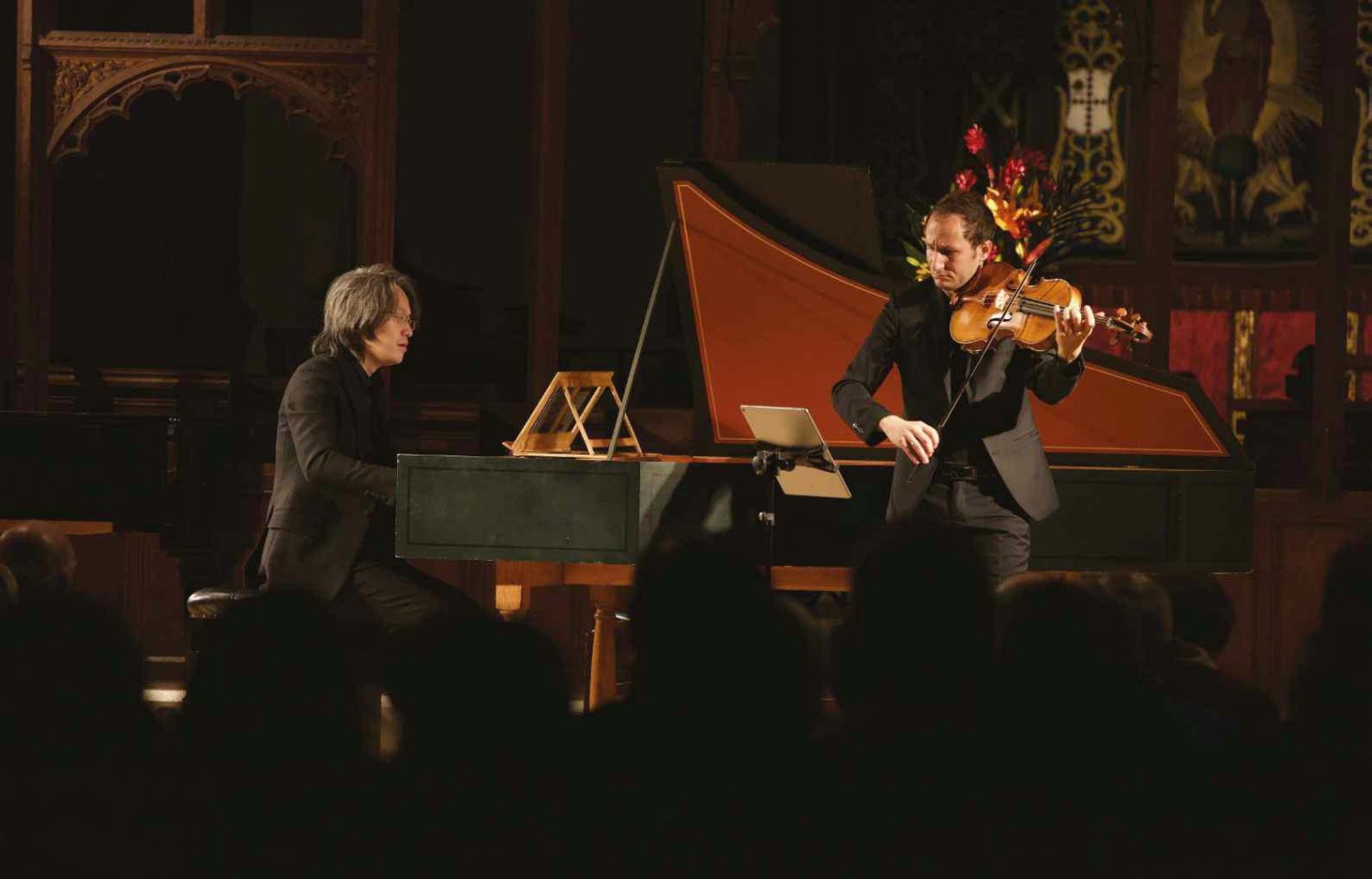
Violist Antoine Tamesit performs Bach with harpsichordist Masato Suzuki at the 2018 Wimbledon Internaional Music Fesival, UK
JOHN YIP
The first words Ithear from Antoine Tamestit upon arriving for our meeting at Teldex Studio Berlin come through the loudspeakers:the is worried that the harpsichord might be too loud for his viola in a certain passage of Bach’s D major Sonata BWV1028. After producer Martin Sauer reassures him that this is not the case, and Tamestit has ingered his way through a particularly knotty passage on his own, a last take is called, after which the musicians inally emerge from the studio, tired but happy following their day’s work. While the technicians are putting away their paraphernalia, Tamestit and I sit down to talk about his latest projects, both of which feature the music of Bach.
Although I play the Cello Suites and the D minor Violin Partita, I ind Bach’s hree Viola da Gamba Sonatas BWV1027–9 to be closest to the viola: they cover almost the same register, and even employ the same alto clef,’ says Tamestit, who has been in love with the sound of the viola da gamba since watching Alain Corneau’s ilm Tous les matins du monde (1991) as a child.the soundtrack was recorded by Jordi Savall, who, in Tamestit’s words, ‘brings forth sounds that are very special for me and really get under my skin, particularly in the music of Marin Marais that is so prominently featured in the movie.these remain some of the most touching musical sounds that I know.’these are the sounds that Tamestit is now looking for when performing Bach on the 1672 ‘Mahler’ Stradivari, strung with covered-gut C and G strings and naked-gut D and A strings, and played with a Baroque bow (based on a Nicolas Pierre Tourte model) made for him in 2011 by Parisian archetier Arthur Dubroca. his set-up, which Tamestit feelsthelps him to emulate the gamba’s sound world, is not without problems, the uncovered D string being particularly tricky. ‘Even with a good brand, not all strings are equal, and you have to get used to the fact that pressure changes their sound. In a way it’s beautiful, because pressure becomes a means of expression; you get interesting kinds of vibrations – but it also alters the pitch, and that can be a problem!’